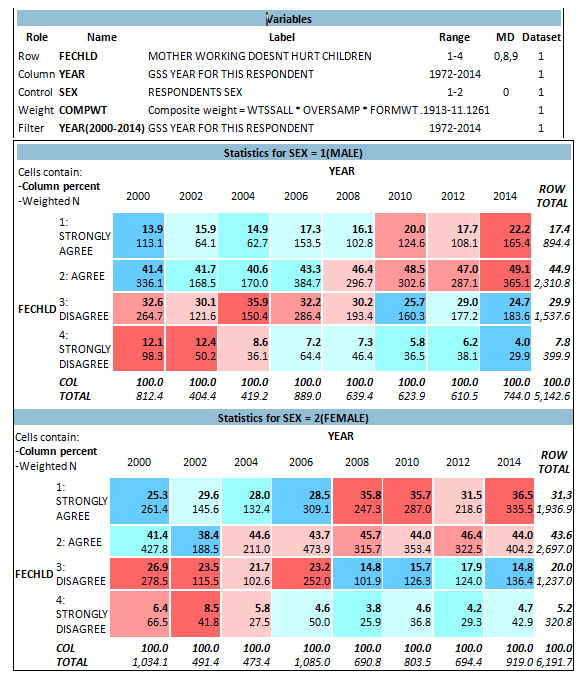The variables FECHLD, YEAR, and SEX have all been included in the GSS regularly since 1977. If the researchers removed the FILTER used to create Figure 7.1, and then re-ran the analyses, what would happen to the overall number of cases in the analysis?
Figure 7.1

A team of researchers is interested to know whether beliefs about working mothers are related to respondents’ gender, and how these beliefs have changed over recent years. They make a cross-tab of FECHLD by YEAR, using SEX as a control variable. The variable FECHLD corresponds to the survey question, “Please tell me whether you strongly agree, agree, disagree, or strongly disagree with it… A working mother can establish just as warm and secure a relationship with her children as a mother who does not work.”
a. The number of cases would likely decrease.
b. The number of cases would likely increase.
c. The number of cases would likely remain the same.
b. The number of cases would likely increase.
You might also like to view...
Two local high school students were caught painting graffiti on an abandoned building on the edge of town
When questioned about their activities, they said, "Nobody even lives there, so what's the harm?" Their response would be an example of which of the following techniques of neutralization? a. denial of responsibility b. denial of harm c. appeal to higher loyalties d. condemning the condemner
Which of the following is true with respect to home schooling?
a. There is a self-selection factor because parents are highly motivated to bring quality education to their children b. Parents make home schooled children slaves to testing. c. Home schooled children are so poor they cannot go to college. d. Home schooled children cannot deal with diversity. e. Home schooled children never engage in extracurricular activities.
Children's books published since the 1970s have shown significant improvement in the representation of females, nearly as many as male characters shown in central roles.
Answer the following statement true (T) or false (F)
Which theory focuses on the role of socialization in deviance, proposing that people learn deviant behavior from the people they spend time with?
What will be an ideal response?